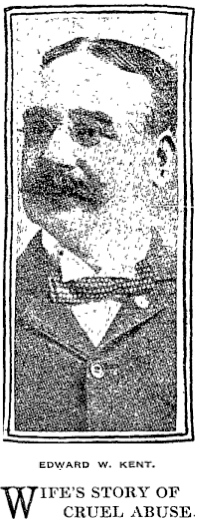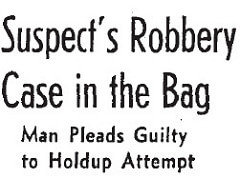May 22, 1919
317 S. Flower Street, Saratoga Hotel
 A building permit for a 3-story brick lodging house that would become the Saratoga Hotel was issued to W.W. Paden and Louis Nordlinger in the summer of 1914. A year later, the hotel was offered for sale, exchange, or lease, offering "long lease, good furniture, and cheap rent."
A building permit for a 3-story brick lodging house that would become the Saratoga Hotel was issued to W.W. Paden and Louis Nordlinger in the summer of 1914. A year later, the hotel was offered for sale, exchange, or lease, offering "long lease, good furniture, and cheap rent."
By 1919, the hotel had already acquired something of a reputation, and was home to many show business types. On May 22, A.W. Gifford, head of the City’s Purity Squad led a raid on the hotel and arrested 32 people on charges of living in a house of prostitution. Members of the Purity Squad had taken rooms at the Saratoga during the week prior to the raid, and gathered evidence during that time.
Police tore apart the Saratoga’s 200 rooms, confiscated hundreds of bottles of liquor and beer, and questioned all occupants. Anyone who could not prove steady employment, and any man and woman found together in the same room without a marriage license were taken to City Jail.
Many of those arrested said they worked in the movies as extras, but police determined that "extra work is not considered real work."
The next day, however, 22 of those arrested were released without charges. The owner of the hotel, Charles H. Price of Monrovia, assumed responsibility, and promised to install a new building manager in an agreement forged with City Prosecutor Widney. Widney explained away the releases, claiming that the raids were staged merely "to break up certain conditions believed to exist."
So, it wasn’t a whorehouse… but it might have turned into one if left unchecked. Thanks Purity Squad!
An angry letter to the editor followed on the heels of the raid, signed only "Justice." It read:
"How is a stranger, a girl alone in a strange city, for instance, to know positively that she is in a respectable neighborhood or house? She may have places recommended by the YMCA, the YWCA, the Bible Institute, and yet find herself in an undesirable location. Nobody can be certain.
What do you think of five men in civilian clothes with no badges or authority — or, at least none visible — bursting into the room of a girl at an unseemly hour, insulting her, accusing her of crime, when she knows absolutely nothing of the reason for such an assault… Do you think five ruffians like that, cowards, would do so if a man were in the room with a gun? Hardly."




 A building permit for a 3-story brick lodging house that would become the Saratoga Hotel was issued to W.W. Paden and Louis Nordlinger in the summer of 1914. A year later, the hotel was offered for sale, exchange, or lease, offering "long lease, good furniture, and cheap rent."
A building permit for a 3-story brick lodging house that would become the Saratoga Hotel was issued to W.W. Paden and Louis Nordlinger in the summer of 1914. A year later, the hotel was offered for sale, exchange, or lease, offering "long lease, good furniture, and cheap rent."
